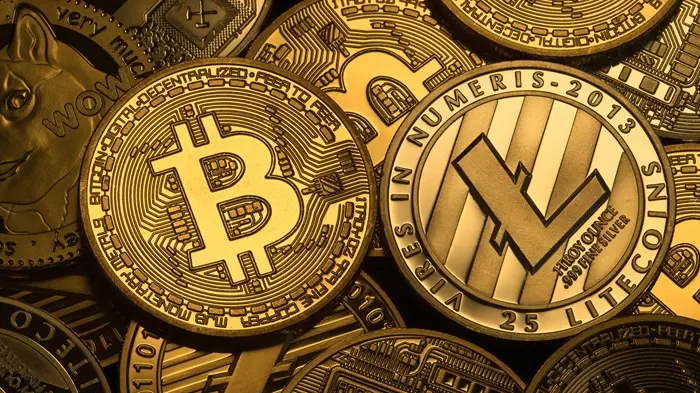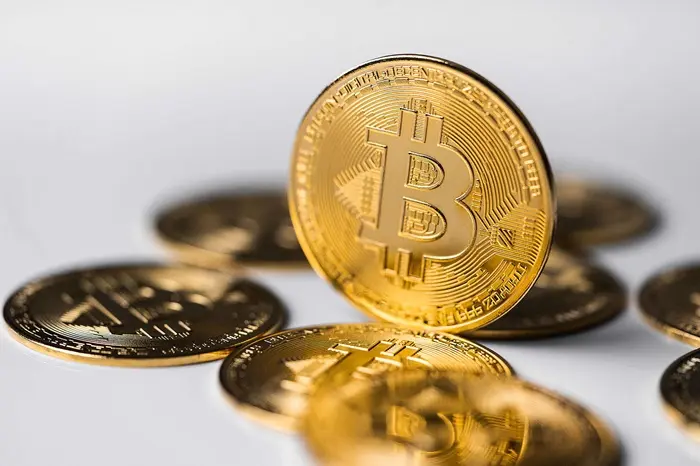In today’s globalized economy, transferring money internationally has become a common necessity for individuals, businesses, and investors. One of the most frequent currency exchanges involves converting Indian Rupees (INR) to US Dollars (USD), especially for people in India who wish to travel, invest, or send money abroad. The process of converting INR to USD, though straightforward, requires a clear understanding of the options available, the costs involved, and the procedures to follow.
This article will explore various methods of transferring INR to USD, provide insight into the best practices for currency exchange, discuss associated fees and risks, and offer practical advice on how to optimize your money transfer process. Whether you are transferring money for personal or business reasons, understanding how to transfer INR to USD effectively is essential for making informed decisions.
Understanding Currency Transfer
Currency transfer involves exchanging one type of currency for another, in this case, converting Indian Rupees (INR) into US Dollars (USD). This process can be carried out through a variety of methods, including online transfer services, banks, currency exchange offices, and peer-to-peer (P2P) services. Each method has its own set of advantages and drawbacks, depending on factors such as speed, cost, convenience, and security.
The exchange rate between INR and USD fluctuates regularly, influenced by market demand, economic conditions, geopolitical events, and central bank policies. Therefore, when transferring INR to USD, it is essential to be aware of the current exchange rate, as well as the associated transaction costs that may affect the overall amount received in USD.
Methods of Transferring INR to USD
There are several ways to transfer INR to USD, each suited to different needs and preferences. The most common methods include:
1. Bank Transfers
Bank transfers are one of the most traditional and secure methods of transferring INR to USD. Banks in India offer currency exchange services, allowing customers to convert INR into USD for various purposes, including travel, business transactions, and remittances.
How Bank Transfers Work
Step 1: The customer initiates a request at their bank for the conversion of INR to USD. This can be done either in person at the bank branch or through the bank’s online platform.
Step 2: The bank processes the transaction by applying the current exchange rate, which may include a margin over the market rate. The customer receives the equivalent amount in USD, either in cash or credited to their foreign currency account.
Step 3: If the customer needs to send the USD abroad, the bank may also assist with transferring the USD to a foreign bank account via a wire transfer.
Pros of Bank Transfers
Security: Banks are highly regulated institutions, ensuring that the transaction is secure and compliant with local and international laws.
Convenience: Bank transfers are available through both physical branches and online banking, making them accessible to most individuals.
Cons of Bank Transfers
Fees and Charges: Banks often charge higher fees for foreign currency exchange, and the exchange rate offered might not be the best available in the market.
Slower Processing Times: International bank transfers can take several business days to process, especially for cross-border transfers.
2. Online Money Transfer Services
Online money transfer services have emerged as a popular alternative to traditional bank transfers. Companies like Wise (formerly TransferWise), Remitly, and PayPal allow users to send INR to USD quickly and at competitive exchange rates. These platforms have simplified the process of transferring money abroad by providing an easy-to-use interface, lower fees, and faster processing times.
How Online Transfer Services Work
Step 1: The sender registers on the platform and links their Indian bank account to the service.
Step 2: The sender selects the amount of INR they wish to convert and the recipient’s USD details.
Step 3: The platform converts the INR into USD at the prevailing exchange rate, deducting a small fee. The recipient receives the funds in their account, often within a few hours or the next business day.
Pros of Online Money Transfer Services
Competitive Exchange Rates: Online services often provide better exchange rates than banks, allowing senders to get more USD for their INR.
Lower Fees: These services tend to have lower transaction fees compared to banks, making them more cost-effective for smaller transfers.
Faster Transactions: Transfers can often be completed in real-time or within a few hours, depending on the platform.
Cons of Online Money Transfer Services
Transfer Limits: Some platforms may impose limits on the amount of INR you can send in a single transfer, especially for first-time users.
Security Concerns: While most platforms are secure, it is essential to choose a reputable provider to ensure that your money is not at risk.
3. Currency Exchange Offices
Currency exchange offices, commonly found in airports, tourist areas, and financial districts, provide a direct method for converting INR into USD. These offices typically operate during business hours and offer the option of either exchanging cash or using a prepaid currency card.
How Currency Exchange Offices Work
Step 1: The customer visits a currency exchange office with their INR.
Step 2: The office exchanges the INR into USD based on the current exchange rate, adding a small margin for their services.
Step 3: The customer receives the USD in cash or is loaded onto a prepaid currency card for future use.
Pros of Currency Exchange Offices
Instant Conversion: Customers can receive immediate USD in cash, making this a quick and convenient option for those needing foreign currency on the spot.
Availability: Currency exchange offices are commonly found in major cities and airports, making them accessible to travelers.
Cons of Currency Exchange Offices
High Fees: Currency exchange offices often charge a higher margin on exchange rates compared to banks and online services, making it an expensive option for large transfers.
Less Secure: Carrying large amounts of cash may not be the safest option for international transfers, especially if traveling.
4. Peer-to-Peer (P2P) Transfer Platforms
P2P transfer platforms, such as LocalBitcoins and others, allow individuals to directly exchange INR for USD by connecting with other users. These platforms provide a marketplace where users can set their own exchange rates and negotiate terms of the transfer.
How P2P Transfer Platforms Work
Step 1: The sender creates an account on a P2P platform and posts a request to exchange INR for USD.
Step 2: The sender reviews offers from other users and selects one that meets their needs. The platform may offer an escrow service to ensure the safety of the transaction.
Step 3: The exchange takes place either via bank transfer or another agreed-upon payment method.
Pros of P2P Transfer Platforms
Lower Fees: P2P platforms typically have lower fees since there are no intermediaries involved.
Flexible Exchange Rates: Users can negotiate rates, potentially getting a better deal than through traditional methods.
Cons of P2P Transfer Platforms
Trust Issues: There is always a risk of dealing with untrustworthy individuals, and the platform may not guarantee full security.
Complex Process: P2P transfers require a bit more effort to find a match and finalize the deal, making them less convenient than other methods.
5. Cryptocurrencies
Some people use cryptocurrencies like Bitcoin or Ethereum to transfer INR to USD indirectly. The process involves converting INR into cryptocurrency, then selling that cryptocurrency for USD. This method has gained traction due to the decentralized nature of cryptocurrencies and the potential for lower fees.
How Cryptocurrency Transfers Work
Step 1: The sender purchases cryptocurrency with INR using a cryptocurrency exchange.
Step 2: The cryptocurrency is transferred to a wallet and can be converted into USD via a cryptocurrency exchange.
Step 3: The recipient receives the USD in their bank account or wallet after the cryptocurrency is sold.
Pros of Cryptocurrency Transfers
Lower Fees: Cryptocurrency transactions often have lower fees compared to traditional methods, especially for large transfers.
Decentralized: Cryptocurrencies are not controlled by any central authority, offering more privacy and freedom in transferring funds.
Cons of Cryptocurrency Transfers
Volatility: Cryptocurrency prices are highly volatile, and the value of the transferred funds may fluctuate significantly during the transfer process.
Complexity: The process of buying, transferring, and selling cryptocurrencies can be complicated, requiring a higher level of understanding of blockchain technology.
Factors to Consider When Transferring INR to USD
When choosing the best method for transferring INR to USD, several factors must be considered to ensure that the transfer is efficient, cost-effective, and secure.
1. Exchange Rates
The exchange rate is one of the most critical factors when converting INR to USD. Small differences in exchange rates can result in significant variations in the amount received. It’s essential to compare rates across different platforms and providers to get the best deal.
2. Fees and Charges
Different transfer methods come with varying fee structures. Bank transfers tend to charge higher fees, while online transfer services may offer lower charges. Additionally, currency exchange offices and P2P platforms may have hidden costs embedded in their rates.
3. Transfer Speed
If you need to send money urgently, speed is an important factor to consider. Online transfer services and P2P platforms usually offer faster processing times than traditional bank transfers, which can take several days to complete.
4. Security
When transferring large sums of money, security is paramount. Using trusted and reputable platforms or banks is crucial to ensure that the funds are safe. Avoiding less secure methods like carrying large sums of cash or unverified P2P exchanges is advisable.
5. Convenience
Convenience involves the ease of use of the transfer method. Online money transfer services and mobile apps offer a high level of convenience by allowing users to initiate transfers from the comfort of their homes or offices.
Conclusion
Transferring INR to USD involves understanding the available methods, each with its benefits and drawbacks. Bank transfers, online services, currency exchange offices, P2P platforms, and cryptocurrencies are all viable options depending on your needs. Factors like exchange rates, fees, transfer speed, security, and convenience should guide your choice of transfer method.
By carefully considering these factors, you can ensure that your INR to USD transfer is done efficiently and at the best possible value. Whether you are an individual looking to travel, invest, or send money abroad, understanding how to transfer INR to USD will help you navigate the global financial landscape with confidence.
Related Topics:
How to Transfer Inr to Usd Online



























